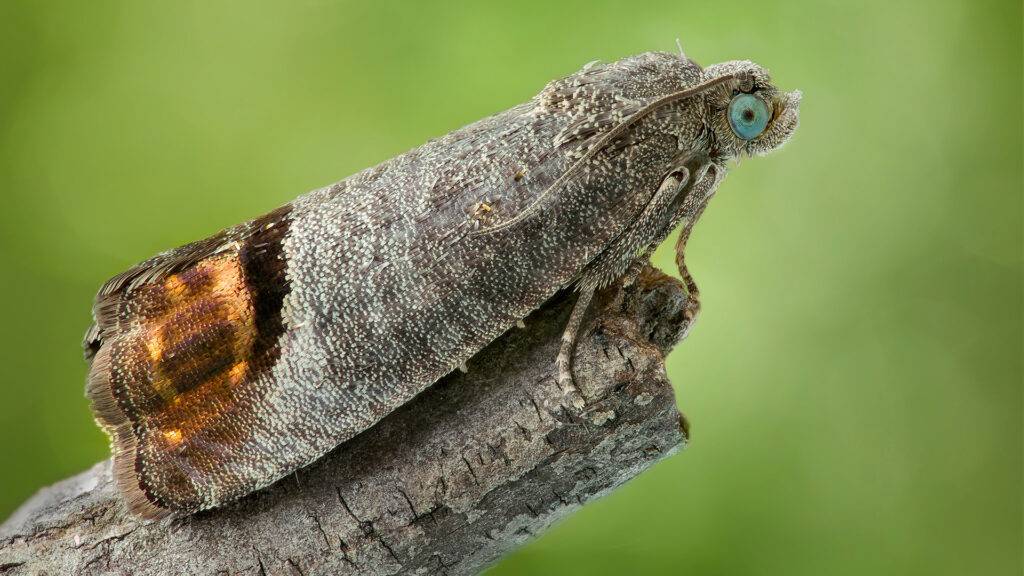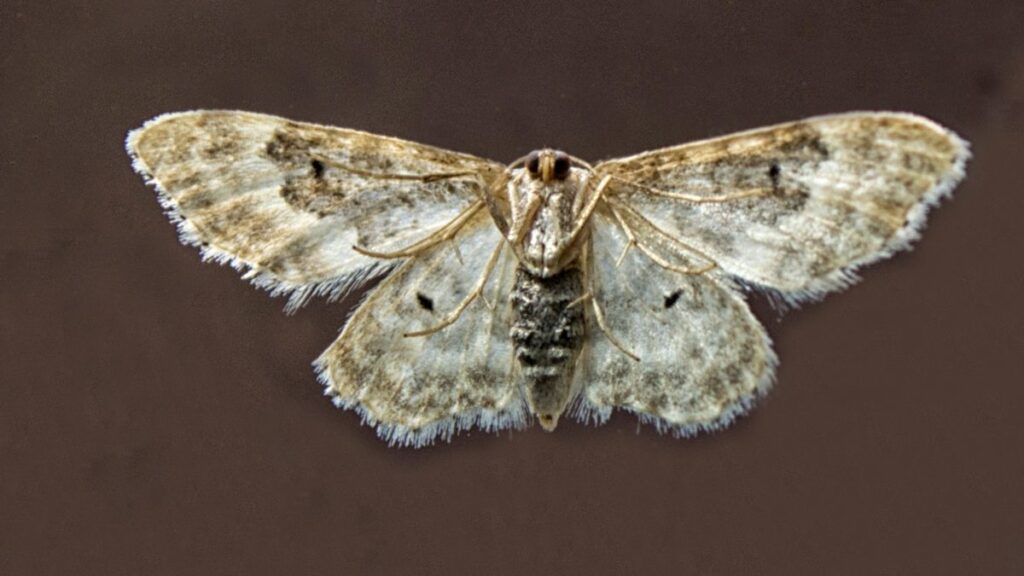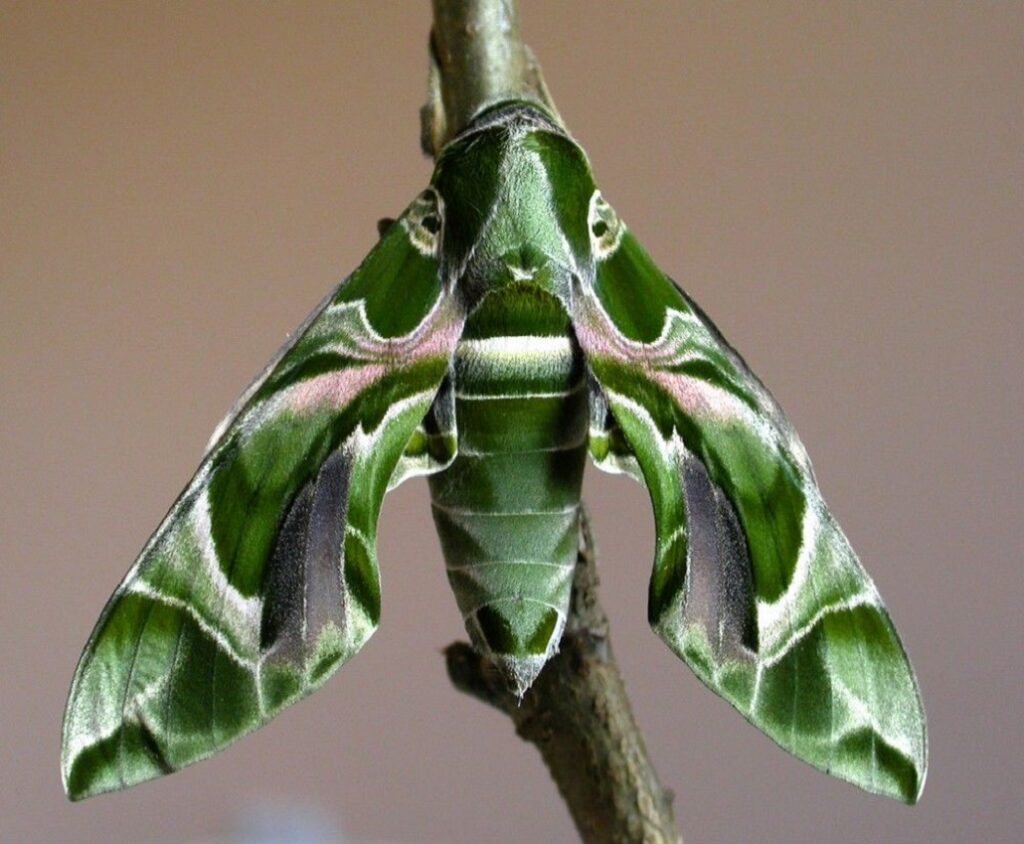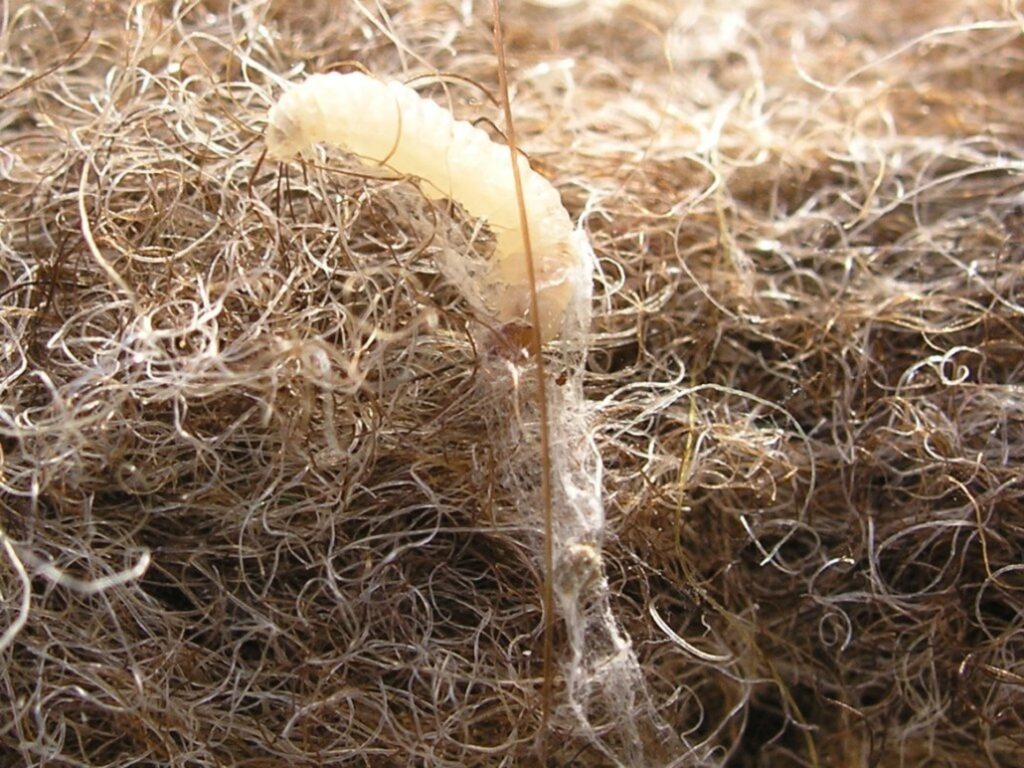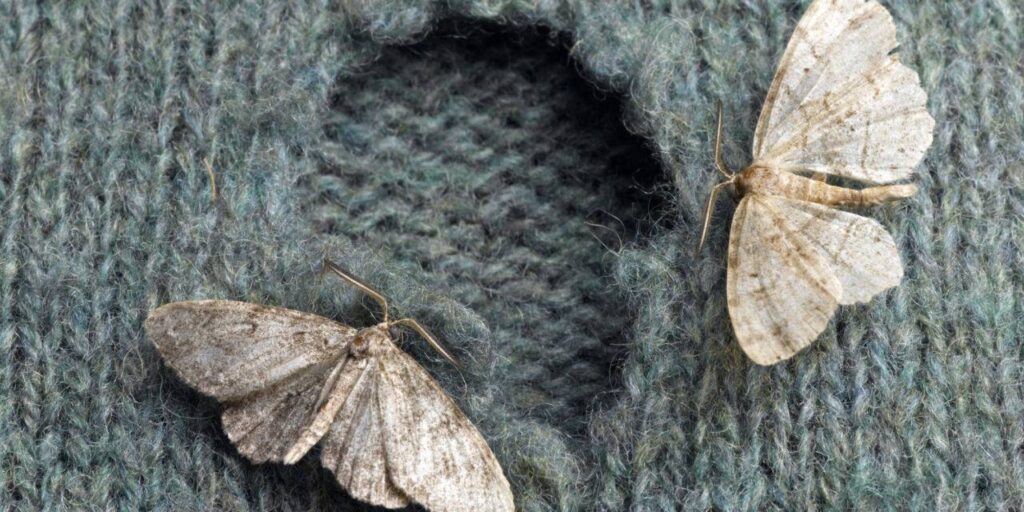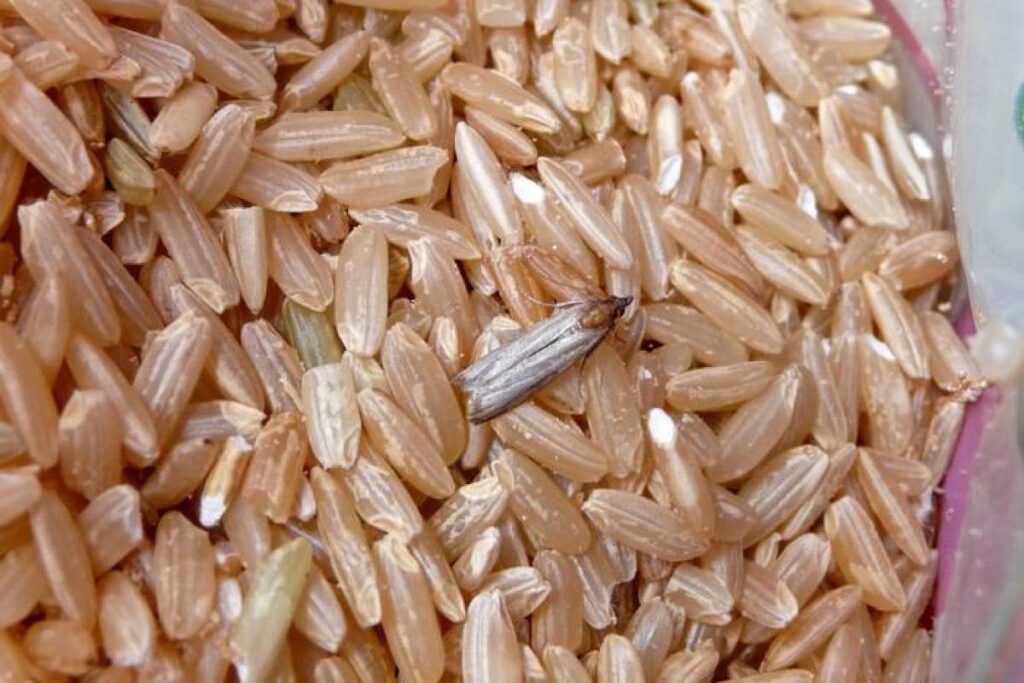The Moth is known as an insect with a scaly wing, which, like butterflies, develops through a metamorphosis going through several stages until it becomes an adult insect. They are famous for their unwanted presence in our cupboards and wardrobes where, like pests, they damage food and clothing. As you continue reading you will learn more about moths.
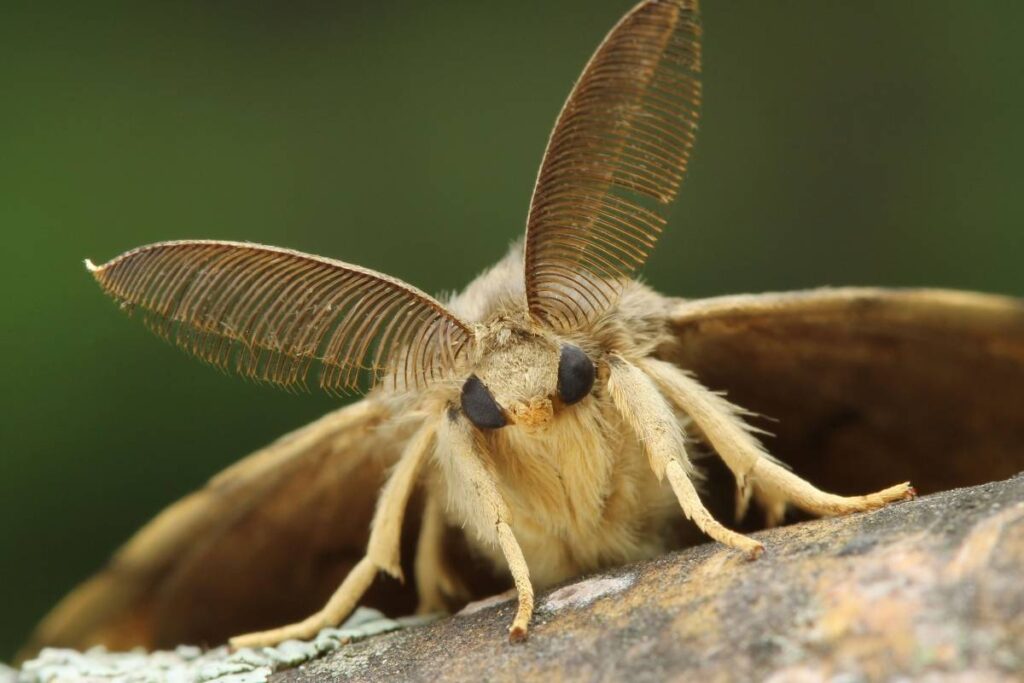
What are Moths?
The term moth has been classified first to different insects that abound in certain foods or household material objects such as clothing or furniture. It also frequently refers to all nocturnal Lepidoptera, even if they are not harmful.
Although it is not exactly correct, the word moth is frequently used to refer to nocturnal butterflies, which are made up of a huge variety of Lepidoptera without taxonomic classification, but gathered under Heterocera.
Moth is primarily called a variety of butterflies of modest size and nocturnal habits whose larvae engulf stored food or household items such as clothing and paper. They are insects of the Lepidoptera order, like butterflies, the group with the greatest presence of insects. The name lepidoptera comes from the Greek words "lepis" which mean "scales" and "ptera" which means "wings".
Moth Characteristics
The features of these insects make it possible to distinguish them from others, such as butterflies, which are usually very similar to these. Here are some of the main elements that characterize it:
The Body
It shows a bulky torso from which the legs and wings emerge. Since their wings are covered with scales, when they catch them they usually release a kind of dust that sticks to the fingers. They have a long and coiled mouth apparatus, like a tongue which they use to suck liquids.
Food
Moths are a class of saprophagous insects, that is, they eat organic matter, so they can become pests. During their growth they eat different materials which vary according to the species. Even so, in adulthood some do not eat, but are dedicated to feeding their larvae. Larval moths usually feed on tissues from natural sources (wool, leather, etc.) for their first three months, which causes great damage to our clothes, curtains, etc.
Time of life
Adult moths usually live for a very short time. After releasing their eggs, the females survive from 3 to 16 more days, while the males can survive for almost a month. The time it takes from egg to adult can vary from one to three months and its entire existence can last three or more years.
Habitat
Moths are frequently located on vegetation. They can survive in all continental areas except Antarctica and are usually more abundant and varied in tropical environments. There are numerous varieties in almost all kinds of environments, from deserts to mountains, including swamps and jungles.
Moth Reproductive Cycle
These insects reproduce sexually after which they have their young through eggs, that is, they are oviparous. They are holometabolous, that is, the transformation or metamorphosis of the moths is composed of four stages: egg, larva, chrysalis and finally the state of adulthood. In the search for a mate, the female is responsible for the production of pheromones to be smelled by the male, who will be attracted to the female moth to begin the fertilization of the eggs.
Once the couple of moths are reunited, they proceed to join their abdomens and the male uses short appendages called closures to hold on to the female and thus be able to start reproducing. These closures also have the purpose of not stopping the process in case it is necessary to escape from a predator. During this process, the spermatophore, a sac or capsule containing sperm and nutrients for the development of the larvae, is completely introduced into the female sexual organ by the male during copulation.
This sac is then stored in the bursa copulatrix, which is the reproductive center of the female moth. This process can be carried out by the female with different males before laying the eggs. When the eggs are fertilized by the sperm, the female is responsible for laying them. The number of eggs to be laid will depend on the capacity of each species; some can lay up to 300 eggs simultaneously, while others only release 100 eggs.
Egg Stage
The eggs can be arranged on the branch of a tree or plant, in shady, warm and humid spaces, and their development can take from 3 to 21 days. Likewise, the time for their hatching is variable since it depends on the environmental conditions in which they are. Added to this, it can also vary according to the species of moth in question, and can range from two days to a few months.
Larva or Caterpillar Stage
In this phase its color can change according to the species; it can be green, brown, black or white. Here it begins to eat plants, fruits, fibers or wood. Through the larval stage, the search for a shelter site begins in order to continue with the next phase of this process.
Chrysalis or Pupa Stage
This phase is the passage from a larva to an insect with wings. The chrysalis is the stage in which the wings of the moth will be formed in order to develop into adulthood. This pupa usually comprises a silk sheath that can form on a plant or underground. Through this stage the moth does not eat anything, but still exhibits a significant number of metabolic changes.
The duration of this cycle can vary from a couple of weeks to a few months, depending on the environmental conditions. In certain cases, this process takes the moths all winter, waiting for the right conditions to come out. At the time of departure, the moth is responsible for breaking the cover. Afterwards, it crawls to a safe place and uses the air to expand its wings.
Adult Stage
At this stage, the moth can live as an adult for the rest of its life, taking care only of food and reproduction, and the repetition of the life cycle. They can be recognized when the moth already shows a sufficiently swollen abdomen and expanded wings to start its flights. This happens, after a few hours, by managing to transmit the hemolymph to the extremities, this being the phase when it detaches from the cocoon.
This lifespan tends to be short when compared to its other stages. However, it will depend on the species and can last from 9 to 10 months.
types of moth
Throughout the world you can find different and a great variety of types of moths that are also adapted to the environmental conditions of the place where they are found. Of the 120.000 known varieties, only a few of them can be considered pests and become a problem. In the home, they are usually problematic since they feed on the fabrics, thereby damaging the clothes. Others tend to eat from stored food.
All moths are arranged in at least four proles of the order Lepidoptera, the tineidae, the pyralids, the geléquids and the tortricids, but there are others as well. There are three varieties of tinnitus to which we must refer specifically:
- tineola bisselliella It is the usual clothes moth, which destroys woolen fabrics. Barely 7 to 8 millimeters long, they show a unique coloration on their wings, usually seen with brown wings with prolonged hairiness.
- Tinea pellionella It is the porta-case variety, named after the case they make to carry their larvae, which are also parasites on clothing.
- Trichophaga tapetzella it is the species present in the rugs.
There are several species of pyralids whose larvae attack grains and stored fodder, to which are added different varieties that parasitize the hives, causing damage to the colonies. Worth quoting:
- Galleria mellonella, variety of bees or wax.
- Achroia grisella, girl bee moth.
- Ephestia kuehniella, the flour variety (not the same Indian flour moth, or banded moth, Plodia interpunctella).
From the geléquididae family:
- Phthorimaea operculella, the potato moth, which attacks various Solanaceae of economic relevance, particularly potatoes, which they harm both in the field and when stored.
From the family Cossidae, varieties of wood and carpets and from the family Tortricidae
- Lobesia botrana, grape variety or cluster moth.
- Cydia pomonella, kind of apple.
Likewise, moths are called insects of other orders that tend to moth-eaten food or household items, among which we find the order Coleoptera, Hylotrupes bajulus, a moth that attacks wood.
There are other varieties of moths that can be poisonous, and they are made up of caterpillars of certain specimens such as: Hemileuca maia, megalopyge opercularis or saddleback. This quality is based on a defense mechanism that they have developed during their growth while they are caterpillars, in order to defend themselves against other predators that seek to harm them.
In general, in certain Latin American countries, moths and a few varieties of black butterflies are considered bad luck since they presumably bring evils such as death or other dark issues of daily life. However, in certain islands of the Pacific Ocean, as well as in the southeastern United States, they are recognized as messengers of economic wealth.
The Sea Moth is the name given to the bivalve molluscs that attack the wood of boats or pilings on docks, members of the Teredinidae family, more frequently known as "jokes".
How to differentiate them from Butterflies?
These insects have wings covered with scales of various colors, usually being less conspicuous and smaller than butterflies. It is very common to confuse moths with the latter, but the difference is the fact that while butterflies are diurnal, moths become active at dusk.
The shape of their antennae is another feature by which moths are distinguished from butterflies. The antennae of moths are comb- or feather-shaped while those of butterflies are rod-shaped.
Main Dangers of the Moth
Although adult moths do not bite, however, the caterpillars of certain moth species do. Other varieties such as the puppy caterpillar (Megalopyge opercularis) or the hag caterpillar (Phobetron pithecium) attack by biting as they are poisonous. Most of the adult moths are peaceful animals, even so they can cause allergies.
The dust released by its wings can cause sneezing or very light allergies. Their wing scales may contain histamine, which is the main cause of allergies. There is a type of moth called Hylesia Nigricans that causes severe allergic responses that can last up to sixty days.
Its size varies from 4 or 5 centimeters, its color is black and it has "hairs" on the body that are the cause of health problems in humans. Among the symptoms associated with an allergic reaction to this moth are high fever, dermatitis and respiratory distress.
Only the females of this species are capable of producing intense dermatitis, with rashes and even blisters. This is due to the high content of histamine they have in the body. Contact with the scales not only occurs when the wings are touched with the hands, since it can also occur when manipulating a curtain or a lamp shade on which the moth has landed.
It is not enough to be careful when exterminating adult moths, since the egg sacs also have scales, which in the female are located on the back of the abdomen. The best method of treating an allergic reaction caused by the scales of any moth is with antihistamine medications. Immediate medical assistance is recommended.
How to detect the presence of moth at home?
Clothes moths are not attracted to light but, on the contrary, seek dark places to hide. The appearance of adult moths in the drawers where clothes are stored is a sure sign of infection. In the case of dried fruit species, foods that have been attacked by caterpillars show sacks inside. Adults often fly zigzag from cupboards or drawers in which food is kept. In the kitchen, for example, you can see how they circulate on walls or ceilings.
Problems that Appear at Home in the presence of Moths
When moths appear in our home, the most exact synonym seems to be "destruction", but let's examine what they attack in particular:
Clothing: There are several types of fibers that they crave, but wool is their favorite. However, if you are one of those who still keep fur outfits and accessories in the closet or have joined the style of feathers, you should realize that moths will get an appetizing main course in such garments. The good news is that everything artificial you own will not be of interest to this voracious insect.
Books: What they love about books and magazines are the mushrooms, which form in the places where the glue was placed. In any case, it does not matter, since the copy will be damaged.
Wood: have you covered your house with tongue and groove? Do you have a beautiful collection of wooden furniture? Moths could spoil this beautiful decor and style faster than you think. But something needs to be done about it, as the problem lies not only in the horrible holes that will remain in the wooden furniture, but also in the possibility of it collapsing when used. They eat the furniture from the inside, leaving an apparently solid layer on the outside, but the reality is that they literally eat away at them from the inside.
How to remove the moth?
When numerous moths are found and this means that they are spread throughout the house. These insects usually go unnoticed when they are not many. Among the measures we can take to prevent moths from reaching your possessions are:
- When clothes are put away, make sure they are clean and free of stains.
- Put the clothes in plastic bags or airtight plastic drawers at the time of storage.
- Use anti-moth chemicals: very effective for preserving garments from one season to another.
- Bay oil helps repel and can be applied to wood to prevent moth damage.
- The clothes must be washed and dried, preferably in cold temperature, before storing them.
- Those grains, tomatoes and flour that will be consumed later, must be stored dry and at a cold temperature.
Moths usually choose clothes that have not been washed or worn for long periods of time. When any garment has been attacked by moths, it is advisable to get out of it immediately. As mentioned above, moths lay their eggs on clothing they have previously fed on.
Home Remedies to Drive Away Moths
To keep moths away, different methods can be used, which will vary according to the species. The disappearance of the moth will demonstrate its effectiveness:
- Chips or boards of cedar, juniper or lavender essential oils or mothballs are widely used in homes, the latter having the disadvantage that they emit a repugnant odor and can be toxic.
- Dichlorobenzene, which is white and odorless, is a powerful chemical that you can use for a quick demise of moths.
- To kill moths, traps with pheromones are also used, to which they are attracted through the use of different chemical substances.
- The use of adhesive traps are very useful and easy to use. You can also use funnel traps that are bags to collect insects. These are placed near places where moths are regulars.
- Stored products that are suspected of being contaminated should be frozen to get rid of moth larvae and eggs.
How do we avoid the reproduction of insects?
Preventing the reproduction of insect breeding sites can sometimes be difficult, since it will depend on the place in which we live, and is closely related to hygiene. But as has been confirmed in the reproductive cycle of moths, they seek out hot and shady spaces, which is why curtains and corners of the house must be inspected continuously.
The same happens with the woodworm, since being such a small insect we do not notice when it raises a breeding ground and knowing that it usually lives in the wood, it can take care of ruining our furniture. When pruning a tree, we have to eliminate the residues or the termites will reach our furniture since they can live in dry or wet wood.
We must add that wood, clothing and mattresses at home must be cleaned, to avoid both the growth of these wood vermin as well as mite bites, which can cause allergic responses and inconveniences of atopic dermatitis.
Animals also suffer the consequences of vermin. Moths often subjugate dogs as they consider it to be a toy. But there is something that our pets suffer from a lot, fleas. You can make a natural spray with vinegar, lemon and witch hazel, a natural poison to kill fleas and the eggs they lay.
On the other hand, to avoid mosquito bites, it is clear that we must prevent the breeding of the insect. For this purpose we have to place essential oils or apple cider vinegar in the corners of the house and additionally we have to inspect the places where there could be water contained, so that they do not lay their eggs there.
There are some animals that just thinking about their bite causes us to panic. A moth bite can send us to the hospital because of the scales they have, since they usually cause dermatitis and allergies.
Importance of Butterflies and Moths
Adult butterflies and moths do no harm, but their caterpillars are often serious pests to vegetation, plant products, and certain animal source products. Millions of dollars are spent each year to attack harmful caterpillars.
Among the most damaging varieties are clothes moths, cabbage moth, corn borer, codling moth, gypsy moth, and cotton bollworm. In general, there are more kinds of harmful moths than butterflies.
However, others are of great importance for pollinating flowers, but on a much smaller scale than bees. The hummingbird moth, for example, carries pollen to certain flowers as it collects their nectar, the yucca moth lays a ball of pollen on the yucca flower, in which it also lays its eggs.
It is also known of numerous caterpillars that are part of the diet of many kinds of insects, reptiles, mammals and birds, there are even people who gobble them up as if it were a delicacy. The silkworm moth is the only insect other than honey bees that has been domesticated, however some people collect and breed butterflies and moths because of the beautiful coloration of their wings.
For those who consider that the moth is nothing more than a rare creature or a despicable pest inside buildings and homes, it is good to know the interesting information that exists about these insects. The word “moth” can drive away images of gray-brown insects that cling to your door or window on summer nights. Beyond what it seems, there is still much more when it comes to these insects.
The moth also provides an enormous variety of ecological benefits, from pollinating plants to being food for birds, bats and even people from all over the planet. Moths outnumber butterflies, their closest relative, by 10 to 1. They are more diverse than all North American bird and mammal species combined.
Certain moths are known for their ability to resemble other animals. To avoid being food, some moths have evolved to appear to be less desirable insects, such as wasps, tarantulas, and praying mantises. Certain moths even simulate bird droppings.
Knowing that certain moths, especially caterpillars, such as the corn earworm, are relevant agricultural pests, many others are important pollinators. This is because the moths' hairy bodies make them great pollinators, as they retain pollen from any flower they land on. The flowers that the moths pollinate are usually fragrant and white, like the yucca plant. Plants with these traits make it easy for night moths to get flowers after dark.
Other moths pollinate during daylight hours. Hummingbird moths fly in front of flowers, unfurling their long tongues to sip nectar. They eat a variety of flowers, including balsam, honeysuckle, and verbena. While certain moths sip nectar, others don't feed at all, like the adult Luna moth that doesn't even have a mouth. This one, after emerging from its cocoon, stays alive for only a week. His sole purpose in life? Spawn and release eggs.
They recognize odor molecules using their antennae rather than through their nostrils. Male giant silkworm moths have evolved, feather-shaped antennae with olfactory receptors that enable them to recognize a single sex hormone molecule from their female partner from miles away.
In certain parts of the world, moths are also a relevant source of food for people. It is said that more than 90 percent of the inhabitants of certain African countries feed on butterflies and moths. Caterpillars are packed with protein and healthy fats, and research has shown that 100 grams of these insects provides more than 100 percent of the daily needs of some essential minerals, such as potassium, calcium, zinc and iron.
Relationship of moths and bats
According to the Fund for the Conservation of Moths, the number of specimens of this insect has decreased by a third in the last 40 years. This decline in turn puts at risk the survival of bats, which eat them. Today, there are only 17 varieties of bats left in the UK, all of them under the protection of the law, as their numbers have been drastically reduced.
In addition to putting the public in contact with wildlife that comes into action only when most people have gone to bed, the organizers of the various activities plan to raise the profile of these animals, which, after cockroaches and mice are some of the least reputable in nature.
"People gravitate towards butterflies, but certainly moths and butterflies are the same thing," says Richard Fox of the Moth Conservation Fund. "The difference is inaccurate, since from a biological perspective, they are identical."
Moths, says Fox, “perform a very important function in nature. They carry out the pollination of the flowers and a series of creatures feed on them, among which are included several species of birds that eat adult moths and feed their chicks with their larvae.
In the tropics, there are even flowers that are pollinated only by moths”, the scientist pointed out. But for ordinary people on the street, moths are linked to the destruction of clothing.
“It is true that they feed on clothes, yet of the 2.500 varieties of moth that exist in the UK, only two do. And in other places, such as in tropical regions, the disparity is even greater, since the number of varieties of moths is higher, "said Fox. And in addition, he adds, "they only eat animal fibers, that is, wool. They are not interested in cotton, nor in artificial fibres».
Bats also play an important role in the ecosystem. They feed on insects, and, like moths, carry pollen to flowers. In the tropics, they are responsible for spreading the seeds of plants and trees.
We recommend the following interesting articles:
- Oviparous animals
- Domestic animals
- Farm animals
